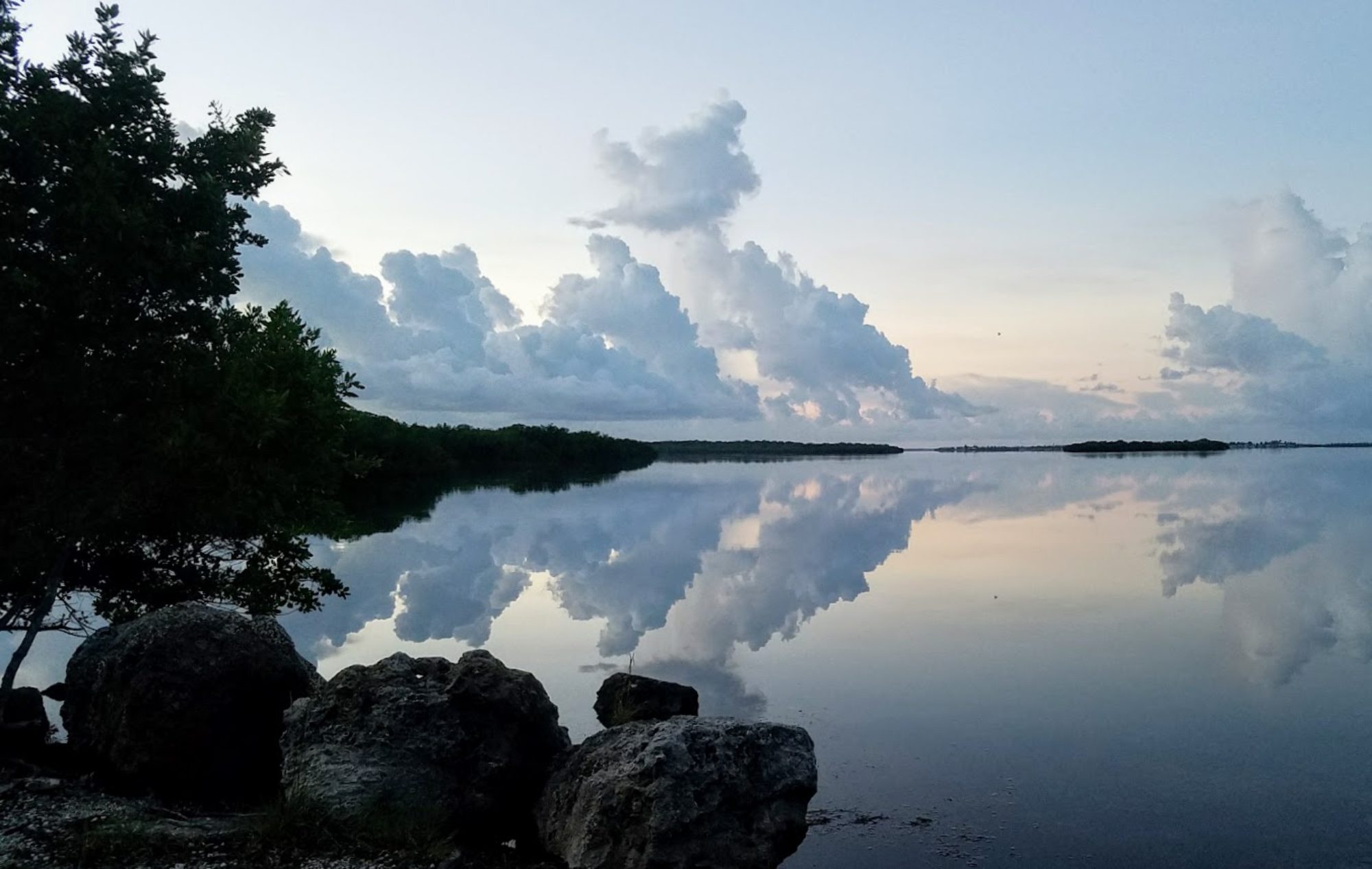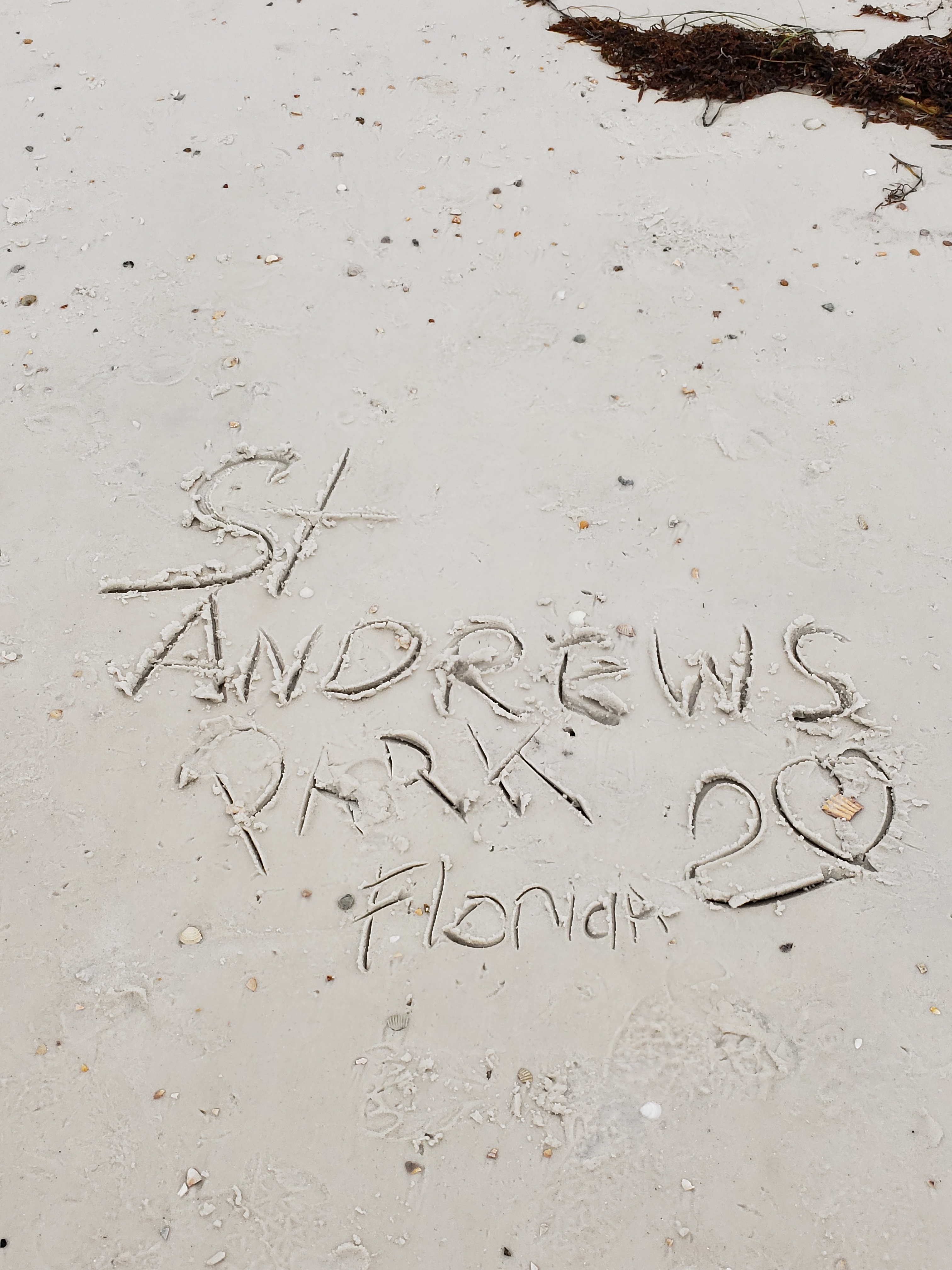Oh, St. Andrews State Park! Over 30 years ago, I first saw this barrier island which protects an area of the Big Bend region of the Florida Panhandle. My husband and I were newlyweds, and he was on a business trip to Port. St. Joe. I was lucky enough to be able to join him in Mexico Beach for a weekend – a real treat since money was tight and vacationing really was not an option for us then.
While Steve was busy with audit business, I took the rental car and just started driving. The weather was terrible; it was drizzly and the sky had that unvaried gray that would herald a snowfall if it occurred in a less tropical clime. I really don’t remember much about that day, but here’s what I do remember: I walked through the drizzle over a dune on a boardwalk, and saw emerald green water so clear I could see sand dollars and white sand under the water. For over 30 years, I have carried this memory with me and I’ve wanted Steve to have the same experience of that shocking green water against the monotone gray sky.
Well, that’s not quite how it worked out.
We were actually lucky to even enter the park; much of it was flooded, it had only reopened the day before, and the shuttle to Shell Island was not running. Nonetheless, we had a terrific day of exploring this splendid barrier island. Swimming, snorkeling, fishing and camping are all activities that can be enjoyed here when the island is not flooded, and there is an environmental interpretive center that is open when we are not in a pandemic. Both camping loops were closed, but there are 176 campsites, each of which provides electricity, water, a picnic table and a grill. Sites can accommodate anyone from the simplest tent camper to 40 foot glamping set ups.
After a quick stop at the Ranger’s office to renew our Florida State Parks annual passes, we went to the ocean side of the island. The east side of Hurricane Sally passed over extreme west Florida on September 16, and on September 19, Steve and I walked over what might have been the same dune boardwalk (but probably not; the park has changed considerably due to storm action over the past several decades). The water was not emerald green. It was more like agate brown! The Gulf bottom, churned up by the storm, had not yet settled and the debris left the water looking less than pristine. While it was not the view I had hoped would take his breath away, almost immediately, Steve spotted some sort of tunicate on the beach.

As we looked closer, we noticed that they were everywhere. Commonly called sea squirts, their presence along the beach was an indication that Hurricane Sally really tore up the seafloor! Early in their lives, tunicates attach themselves to a rock, a boat bottom, or whatever happens to be handy, and spend the rest of their lives there. That is, unless something drastic – say, a hurricane – happens. The ones we saw were about 4-6″ long, and brownish burgundy with white stippling. As you can see from the pictures, the sand is that striking white sugar sand that has resulted from millions of years of erosion in the Appalachian mountains.
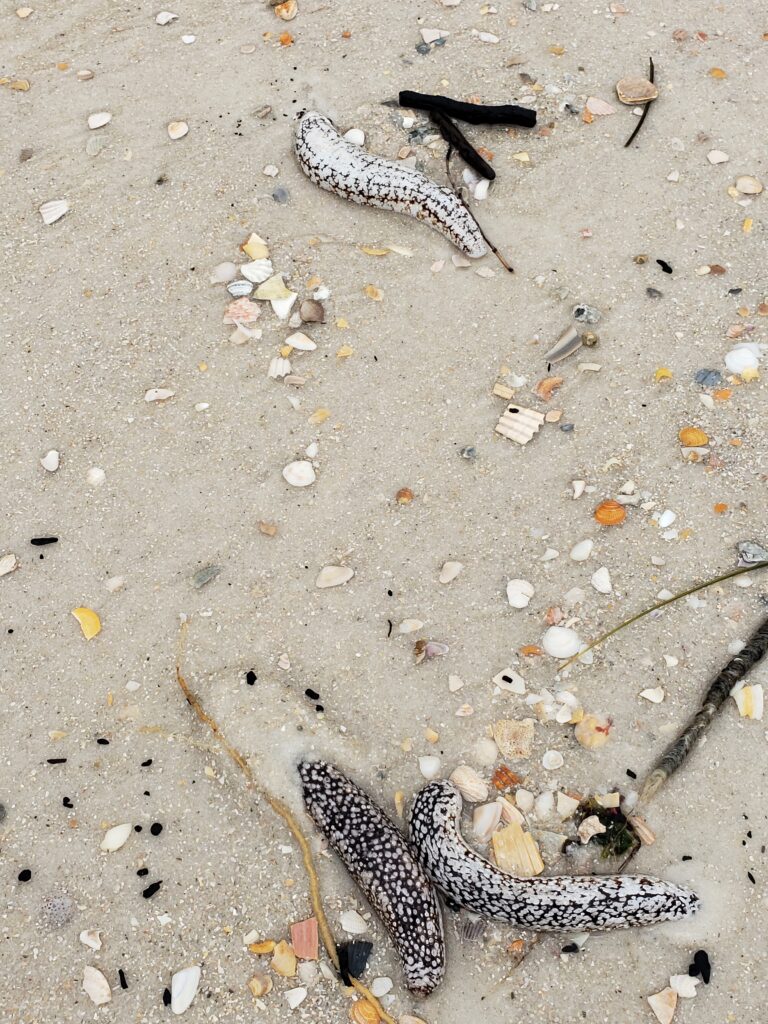
Gator Lake and Heron Pond trails were closed because of flooding (this seems to be a theme in our lives this summer!). We decided to hike around the park on the loop road that encircles Buttonwood Marsh and passes most of the major landmarks.
Our first stop was Gator Lake. We did not see the gator, but the lake was a lovely sight. The steps leading down to the trail were — you guessed it! — flooded. But we enjoyed watching the water and daydreaming about our return on a drier day.

Next, we spent a few minutes taking in the splendor of Buttonwood Marsh. Even in its flooded condition, there was plenty to see. We found tree frogs, native wildflowers, and plenty of bird life.
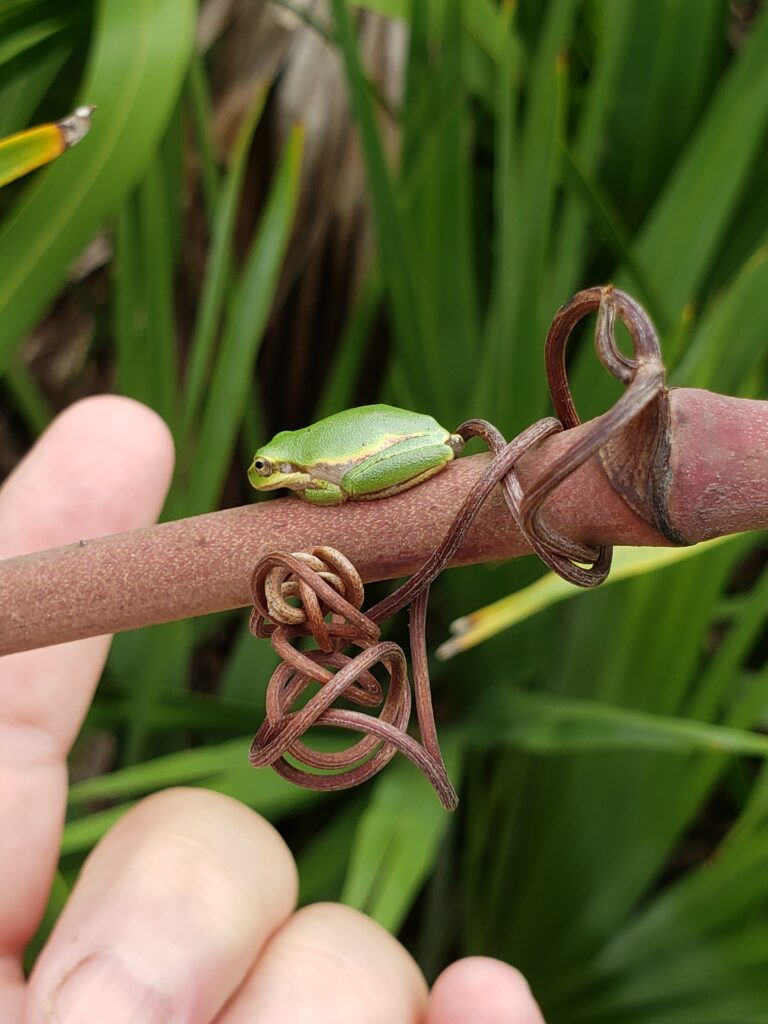
We visited the camp store and chatted up the clerk. She was lovely and patient as we told the story of how I discovered the park years ago and always dreamed of coming back. . . we spent too much on swag, but I really needed that mermaid shotglass, right?
Moving on, we went to the tour boat dock and found Heron Pond Trail. The trail was closed, but there was a nice open area just before the trail. This ecotone between marsh and pine flatwoods was rich in sights, and we wandered here a bit, enjoying the ruins of an old sawmill and stumbling upon some nice Florida Rosemary.
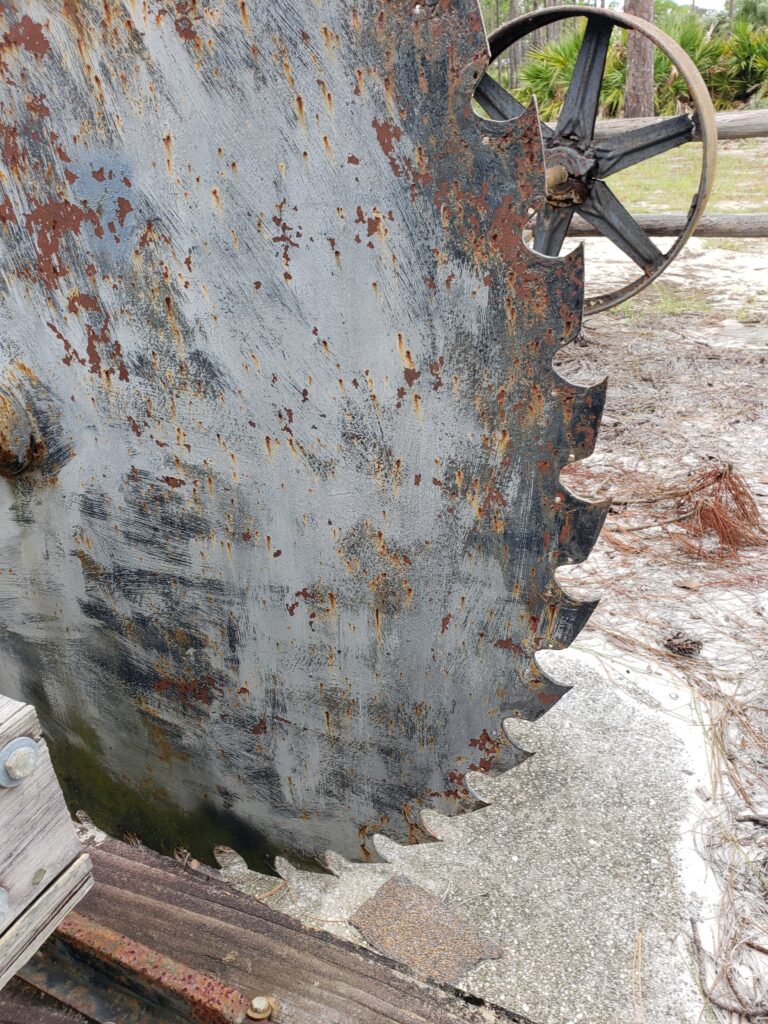
I also took a photo which I think would make a lovely Christmas card with bright red berries against the kind of gray-green foliage that is only found in Florida scrub.
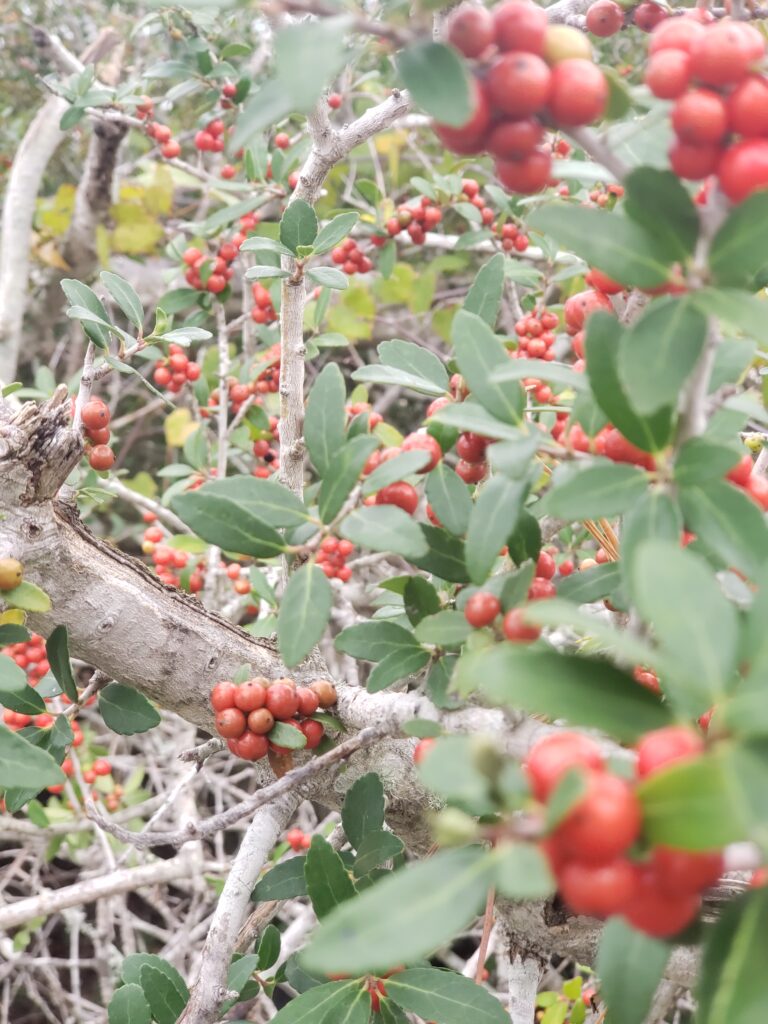
In a very wet area on our way back to the dock, we found more tree frogs enjoying the breezes among the palm fronds.
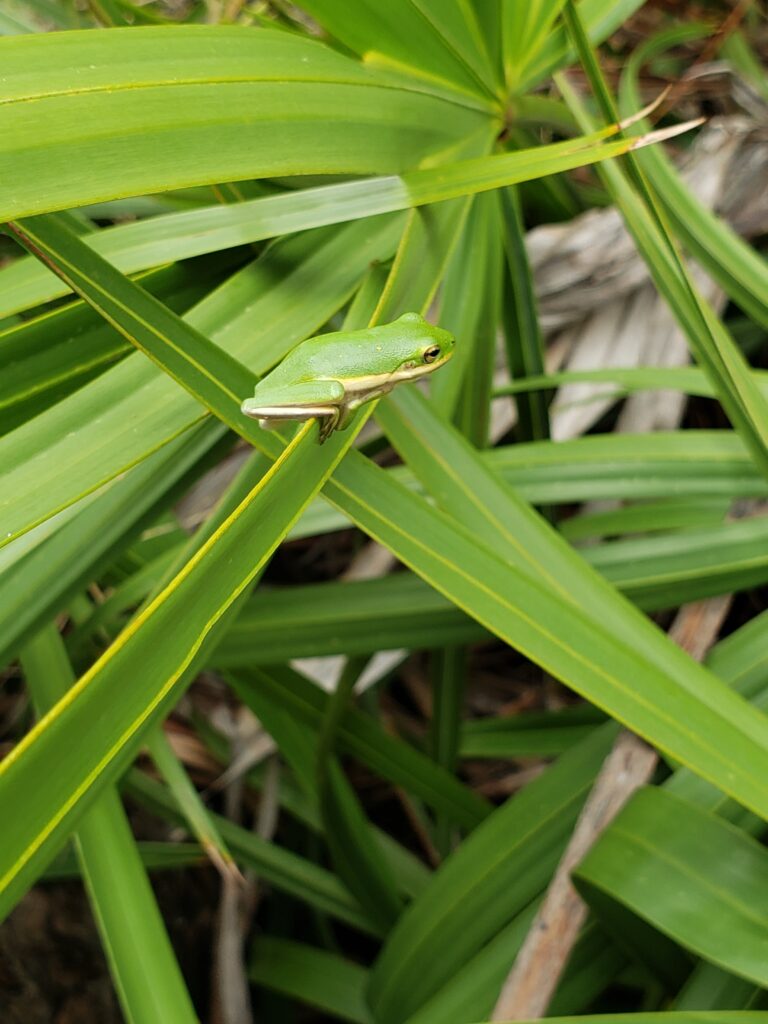
This beautiful park still holds a grip on my heart, and I hope we will go back soon to enjoy some camping and swimming. Heaven knows we can’t wait another 35 years!
